Want to Earn More from Your Website Without Annoying Your Visitors?📲
As a publisher, you’re always looking for new ways to earn money from your site or app.
But let’s be real most ad formats either slow down your site, hurt user experience, or just don’t pay enough. 😩
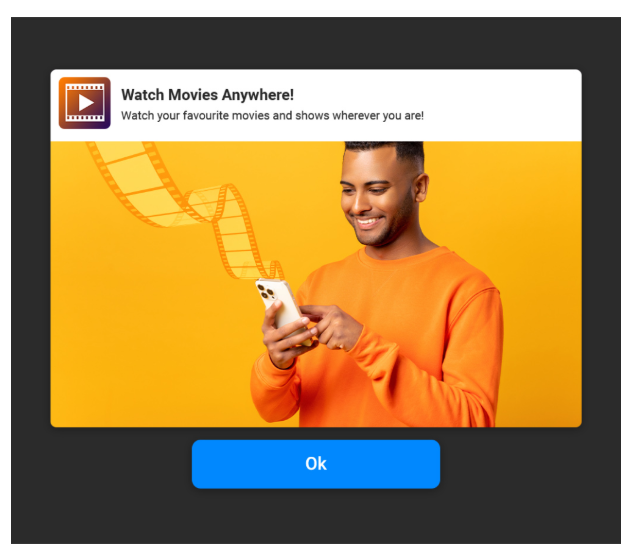
Now imagine a solution that doesn’t take up space on your site, doesn’t affect load speed, and still brings in passive income even when the user is not browsing your site. Sounds interesting, right? 💡
That’s where Push Ads come in. These simple, opt-in notifications can keep earning you money daily even after the user has left your website. 💸
✅ Let’s get started!
#1 Choice is Adsterra
I was running a blog that had decent traffic, but the ad revenue felt stuck.
I tried pop-ups and banners from a few networks, but the results weren’t consistent some weeks were good, others just dropped.
That’s when I gave Adsterra a try. I started with their push ads, and honestly, within a few days, I noticed smoother earnings.
The CPM rates were better than most, and the ads actually looked clean and non-intrusive, which kept my bounce rate low. What really made me stick with Adsterra was how easy the setup was and how fast the payments came in no delays, no issues.
Their dashboard gave me real-time stats, and I could track everything without feeling overwhelmed.
Plus, their support team was surprisingly quick and helpful. Ever since, I’ve trusted Adsterra as my top choice.
It gave me the balance I wanted steady income without annoying my users.
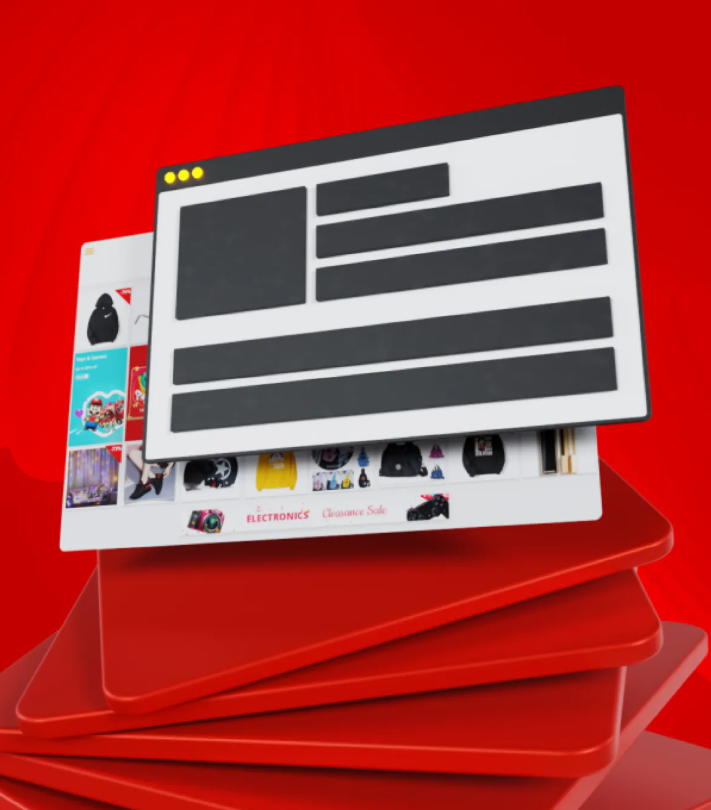
Easy Steps to Sign Up as a Publisher
These are the few steps that you can follow and set up your account for free.
Step 1. Visit the official site.
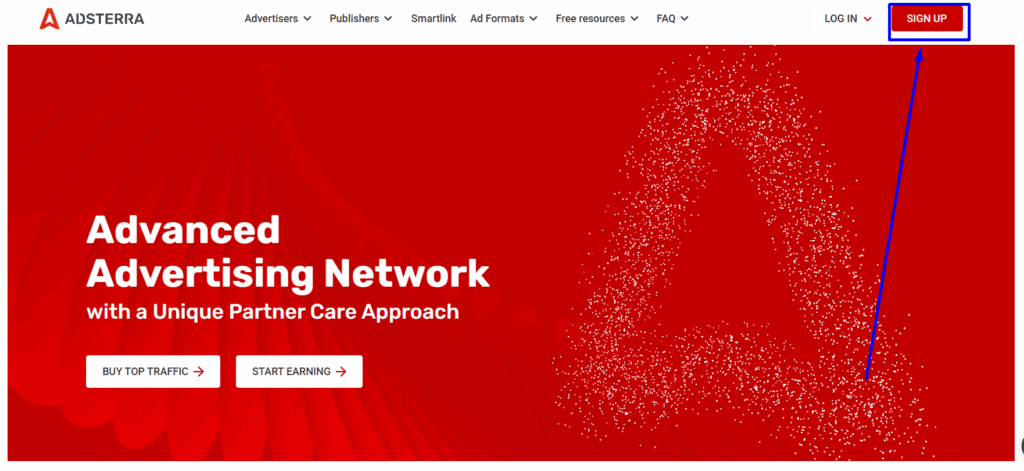
Step 2. Choose the Publisher option.
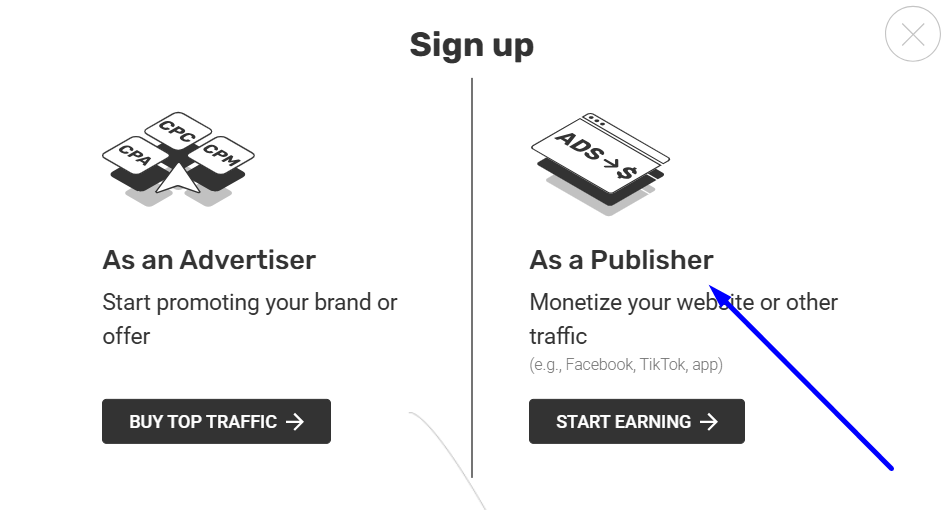
Step 3. Fill up the following details.
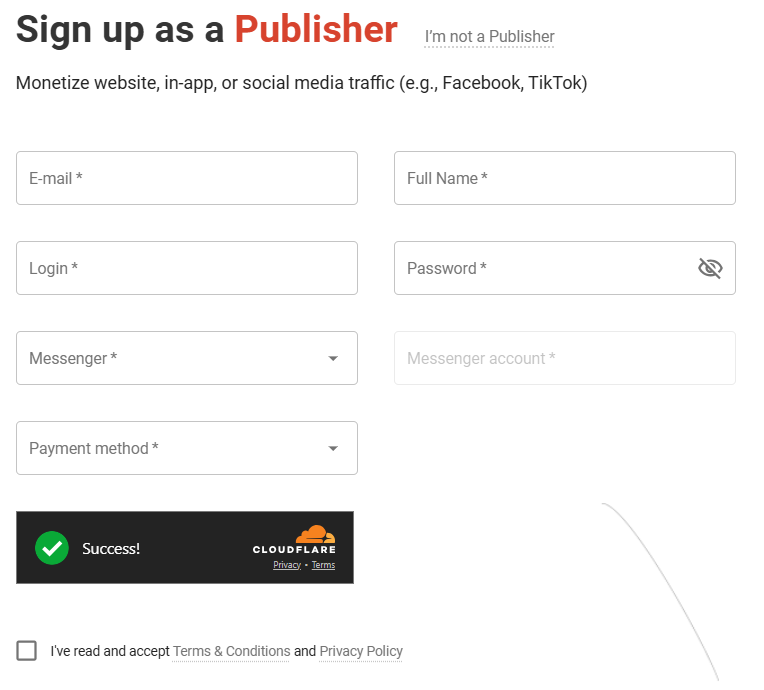
Step 4. Now a mail is sent on your mentioned mail.
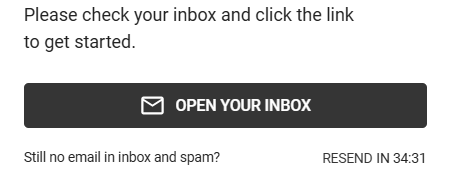
Step 5. Now click on the given link and get started.
Why Push Ads Are Important for Publishers
Push ads are important for publishers because they offer a simple way to earn recurring income by reaching users even after they leave the website.
1. Earn Money Even After a User Leaves Your Website
With most ad formats, you can only earn when the user is actively browsing your site.
But with push ads, once a visitor subscribes to notifications, you can keep sending them ads even after they’ve left.
This creates a steady stream of passive income every notification sent has the potential to earn you money, even if the user never returns to your website again.
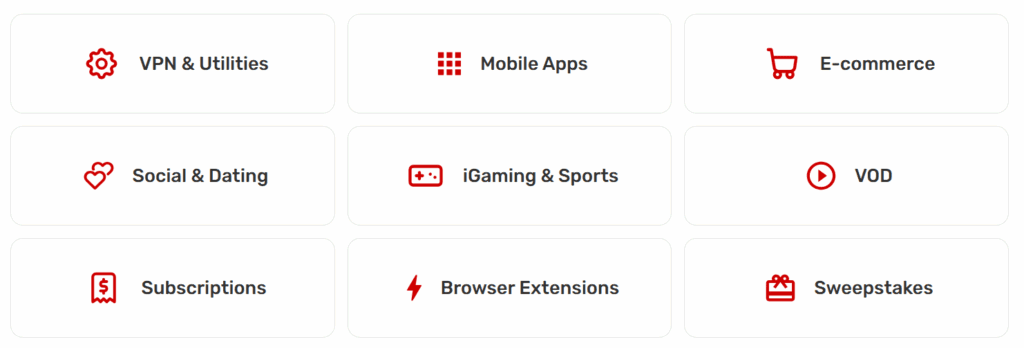
2. No Need to Change Website Layout or Design
Push ads don’t require any visible space on your website.
Unlike banners or popups that need placement in the layout, push ads work through a small subscription box and run independently.
This means your website design stays clean and fast, while you still generate ad revenue in the background.
3. Works Well on Both Mobile and Desktop Devices
Push notifications are compatible with all major devices smartphones, tablets, and desktops. Many ad formats perform poorly on mobile, but push ads are fully optimized across platforms.
This helps you monetize your full traffic base without missing out on mobile users, which often make up the majority of traffic today.
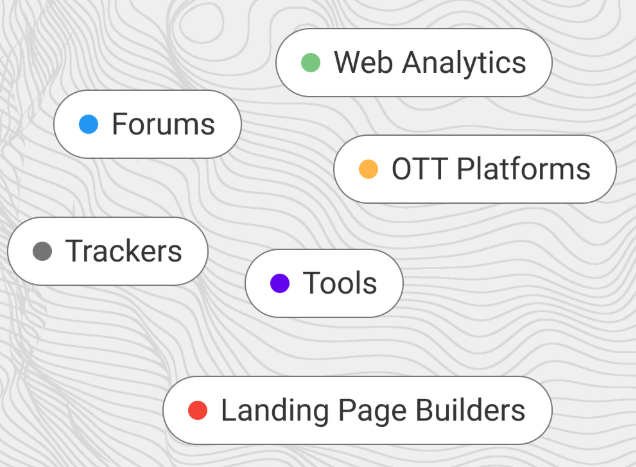
4. 100% User-Consent Based Monetization
Push ads require the visitor’s permission before they can be used. Users must click “Allow” to subscribe to notifications.
This ensures that the audience is genuinely interested in receiving updates, which makes the ad delivery more effective and helps build long-term trust between you and your audience.
5. Better User Experience and No Intrusion
Because push ads are delivered outside of the main website (directly to the browser or device), they don’t interfere with content consumption.
They don’t slow down your website or block important information.
This means your visitors enjoy a smooth browsing experience, and you still earn money silently in the background.
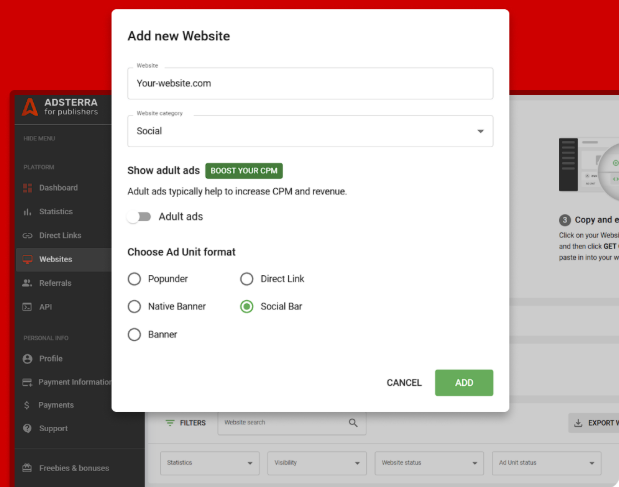
6. Passive, Recurring Income Stream
Push ads help publishers build a growing subscriber base. Once a visitor subscribes, you can send them ads multiple times a week, or even daily.
This turns a single visit into repeated income opportunities. Over time, your earnings grow as your subscriber base increases, creating long-term passive income.
7. Higher Click-Through Rates (CTR) Than Traditional Ads
Push notifications show up directly on the user’s screen, even when they are not browsing.
This makes them more noticeable than regular display ads on a website. As a result, push ads tend to have higher engagement and click-through rates, which often means better earnings per impression.

8. Suitable for All Website Niches and Traffic Types
Whether you run a blog, news portal, tech site, download site, or entertainment platform, push ads can be easily integrated.
They are also accepted on a wide range of traffic types — including Tier 1, Tier 2, and Tier 3 countries making it easier for publishers worldwide to monetize effectively.
9. Easy Integration with Minimal Technical Knowledge
Most push ad networks provide a simple script that you can copy and paste into your website’s header.
You don’t need advanced technical knowledge or coding skills. Some networks even offer WordPress plugins for one-click integration.
This simplicity allows even beginner publishers to get started quickly.
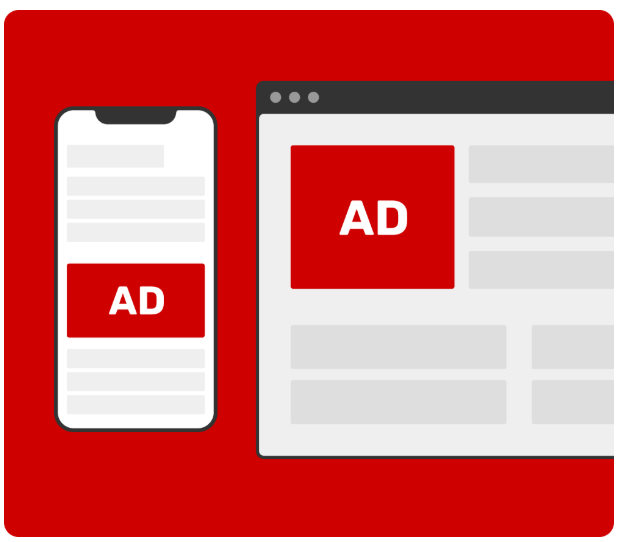
10. Monetization Possible Even with Low Traffic
Unlike many other ad formats that require large volumes of traffic to be profitable, push ads allow publishers to start small.
Even a few hundred subscribers can bring in noticeable earnings over time.
As your traffic grows, so does your subscriber base and your income potential increases along with it.
How Push Ads Work for Publishers?
Push ads work for Publishers by delivering targeted messages directly to users’ devices, whether they are actively browsing the website or not. Here’s a detailed breakdown of how push ads function:
1. Publisher Joins a Push Ad Network
First, you (the website owner) sign up with a push ad network like Adsterra, PropellerAds, RichPush, or similar. These networks act as middlemen — connecting you with advertisers who want to promote their products via push notifications.
2. You Add the Subscription Code to Your Website
After registering, the ad network provides you with a small piece of JavaScript code. You place this code in your website’s header or through a plugin (if using WordPress). This code enables your site to show a subscription prompt to visitors.
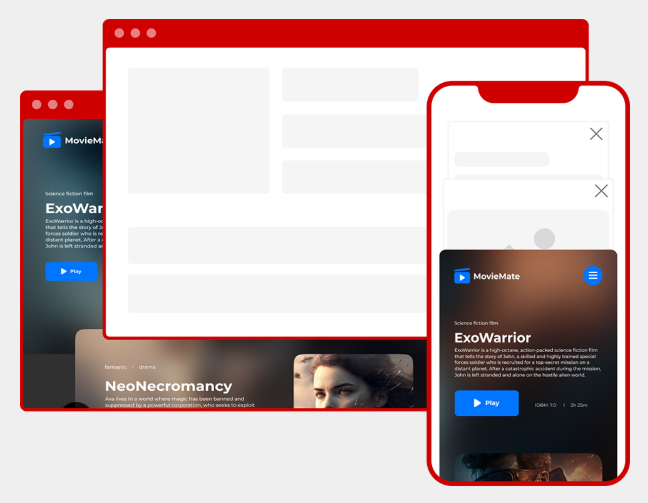
3. Visitors See a Notification Request (Opt-In Prompt)
When someone visits your site, they see a browser-based message like:
“This site wants to send you notifications. [Allow] [Block]”
This is a standard browser feature (not a popup), and it’s the first step toward turning that user into a subscriber.
4. User Clicks “Allow” Now They’re Subscribed
If the visitor clicks “Allow,” they are added to your push subscriber list. This means you now have permission to send them notifications via the browser — even if they are no longer on your website. It’s a one-time opt-in.
5. The Ad Network Starts Sending Push Ads Automatically
Once a user subscribes, the ad network begins sending sponsored push notifications to them. These messages can appear on desktops or mobile devices and are usually short, clickable ads — like discount offers, promotions, or app downloads.
You don’t need to create these ads yourself — the ad network handles it. All you do is build the subscriber base by getting more opt-ins.

6. Subscribers Receive Ads Even When They’re Not on Your Site
That’s the best part. These push ads are delivered directly to the subscriber’s browser — whether they are on Facebook, YouTube, or just on their desktop. This allows you to monetize users beyond their time spent on your site.
7. You Get Paid Per Click or Impression
Each time a subscriber clicks on a notification, you earn money.
- If you’re paid on a CPC model (Cost Per Click), you earn for every click.
- If it’s CPM (Cost Per Thousand Impressions), you earn for every 1000 notifications shown even if not clicked.
Advantages & Disadvantages of Push Ads
| Advantages | Disadvantages |
|---|---|
| 1. Earn even after users leave the website | 1. Depends on user permission (opt-in required) |
| 2. Works passively without affecting site layout | 2. Some users may find frequent notifications annoying |
| 3. Higher CTR compared to traditional display ads | |
| 4. Easy to set up with minimal technical knowledge | |
| 5. Compatible with both mobile and desktop traffic |
Future Of Publishers In Push Ads
The future of push ads for publishers looks strong and promising — especially for those who want to earn steady income without affecting user experience. Here’s what the future may hold:
1. More Focus on Quality, Not Just Quantity
In the future, push ad networks will likely reward publishers who send engaging, high-quality notifications.
The better your subscriber engagement (clicks, time spent), the higher your earnings. So instead of just collecting subscribers, publishers will need to build better push strategies.
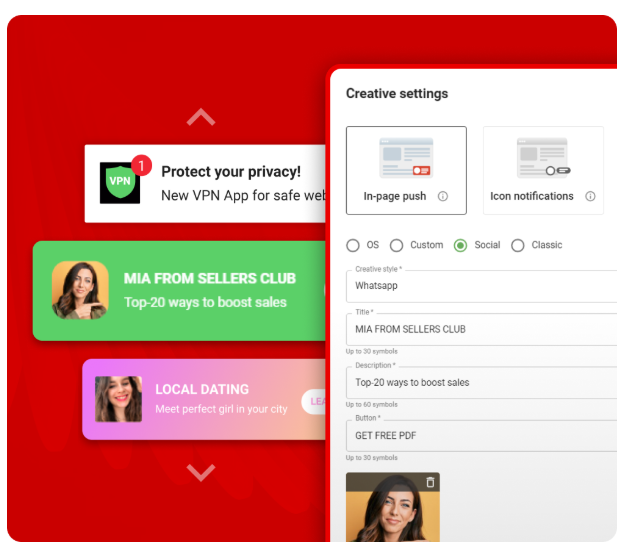
2. Smarter Targeting and AI Optimization
Push ad platforms are adding AI tools that choose the best time to send ads, the right content, and even the right user segment.
This means publishers can earn more with less effort as smarter tech does the hard work in the background.
3. More Control for Publishers
Networks are starting to give publishers more control over the types of ads sent to their users — like category filters (e.g., tech, finance, gaming).
This helps publishers protect their brand and maintain trust with their audience.
4. Growth of Web 3.0 & Decentralized Ads
As the web moves toward more privacy-focused and decentralized systems (like Web 3.0), push ads will evolve to fit new environments — offering more user privacy, but also more permission-based earning options for publishers.
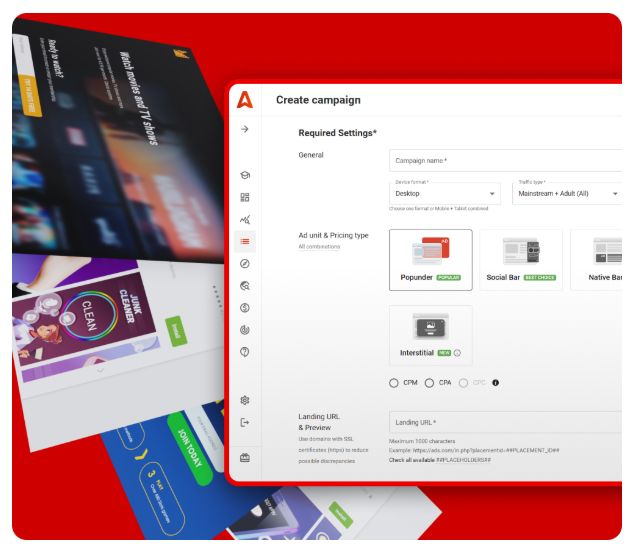
5. Integration with Affiliate & Direct Campaigns
Many publishers are already using push ads to promote their own affiliate links or blog content.
In the future, more platforms may offer hybrid monetization letting publishers combine sponsored ads with their own traffic promotions.
6. Better Revenue Models with Tier-Based Payments
Push ad networks are improving how they pay publishers — with more flexible revenue models like CPC, CPM, and even CPA.
This allows publishers to choose what works best for their audience. In the future, dynamic payout systems may reward publishers based on user engagement and retention, not just clicks.
7. Rise of Native Push Ads
Push ads will become more native-looking — meaning they’ll blend better with user behavior and feel more like helpful alerts than ads.
This improves the user experience and builds higher click-through rates, especially on mobile.
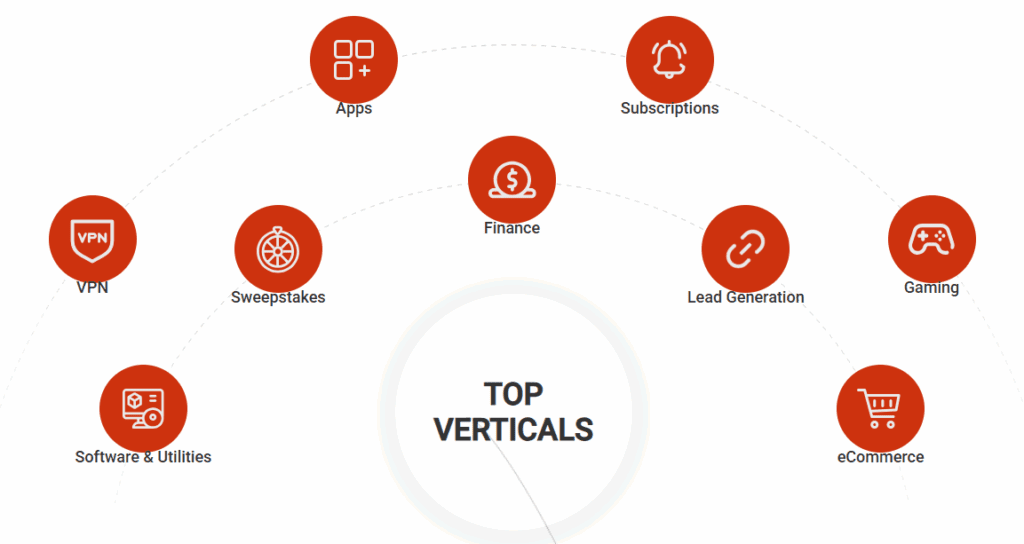
8. Push Ads as a Brand Tool, Not Just Monetization
Publishers will start using push ads not only to earn from ad networks but also to build their own brand.
They’ll send curated content, affiliate links, newsletters, and event updates directly to their subscribers. This will help grow loyal audiences and increase direct traffic to their websites.
Conclusion
Push ads offer publishers a smart way to earn passive income by reaching users even after they leave the site.
With better targeting, higher CTRs, and low setup effort, they are becoming a top monetization tool.
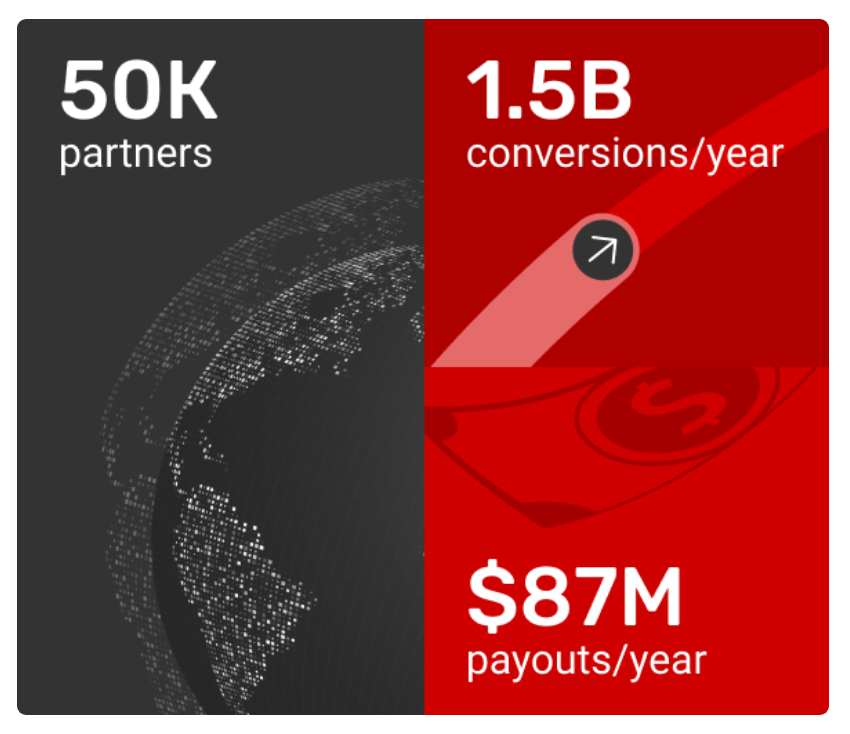
As the technology grows, publishers who start now will benefit the most in the future.
Frequently Asked Questions
1. Can I use push ads with AdSense?
Yes, push ads are usually compatible with AdSense. Just follow both networks’ policies.
2. Do push ads slow down my website?
No, they run in the background and don’t affect load speed.
3. How often are push ads sent?
Usually 1–3 times daily, depending on the network and settings.
4. Can I send my own push messages?
Some networks allow this for blog updates or affiliate links.
5. What if users unsubscribe?
You’ll stop earning from them unless they resubscribe.
